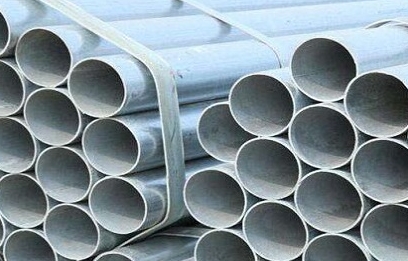
Application of Galvanized Seamless Steel Pipe In Pipeline Transportation
Pipeline transportation is a crucial aspect of many industries, including oil and gas, water supply, and even infrastructure development. One of the most reliable materials used in these pipelines is the galvanized seamless steel pipe.
What is Galvanized Seamless Pipe?
A galvanized seamless pipe is a type of steel pipe that undergoes a galvanization process, where a protective zinc coating is applied to the steel to prevent corrosion and rust. The "seamless" aspect refers to the manufacturing process of the pipe, which involves piercing a solid billet of steel to create a hollow tube. This process results in a pipe with no welds or seams, making it exceptionally strong and durable. Galvanized seamless pipes are widely used in environments where durability and resistance to corrosion are essential.
Characteristics of Galvanized Seamless Pipes
Galvanized smls pipe possess several key characteristics that make them ideal for a variety of applications:
Corrosion Resistance: The zinc coating on the pipe provides a robust barrier against corrosion, extending the lifespan of the pipe even in harsh environments.
High Strength and Durability: The seamless nature of these pipes ensures uniformity in strength, allowing them to withstand high pressure and heavy loads.
Smooth Surface: The seamless structure also provides a smooth internal and external surface, reducing the risk of leaks and making them easier to work with during installation.
Versatility: These pipes are available in various sizes and thicknesses, making them suitable for a wide range of applications.

The Difference Between Galvanized Seamless Pipe and Rectangular Pipe
While both galvanized seamless pipes and rectangular pipes are used in construction and infrastructure projects, they differ in form and application:
Shape: Galvanized seamless pipes are cylindrical, providing uniform strength in all directions. In contrast, rectangular pipes have a flat surface with 90-degree angles, which can be beneficial in specific structural applications where flat surfaces are required.
Application: Seamless pipes are often used in pipeline transportation due to their ability to handle high pressure and corrosion. Rectangular pipes, on the other hand, are more commonly used in structural applications, such as in the framework of buildings or bridges, where their shape provides additional support and stability.
Strength: While both types are strong, the seamless pipe's lack of welds makes it more suitable for high-pressure environments, whereas the rectangular pipe's shape can provide better load-bearing capacity in certain structural configurations.
Application of Galvanized Seamless Steel Pipes in Pipeline Transportation
In pipeline transportation, the reliability and durability of the materials used are paramount. Galvanized seamless steel pipes are particularly favored for the following reasons:
Corrosion Resistance in Harsh Environments: These pipes are used in environments where the pipeline may be exposed to moisture, chemicals, or varying temperatures. The zinc coating effectively prevents corrosion, ensuring the pipeline’s longevity and reducing maintenance costs.
High Pressure and Temperature Tolerance: In industries like oil and gas, pipelines must handle high pressure and extreme temperatures. The seamless construction of these pipes provides the necessary strength to withstand such conditions without failure.
Smooth Flow of Materials: The smooth interior of galvanized seamless pipes ensures minimal friction, allowing for the efficient and uninterrupted flow of fluids or gases through the pipeline.
Long-Term Cost-Effectiveness: Though the initial investment in galvanized seamless steel pipes may be higher, their durability and low maintenance requirements make them a cost-effective solution over the long term.
Conclusion
Galvanized seamless steel pipes are a crucial component in modern pipeline transportation due to their strength, corrosion resistance, and ability to withstand harsh conditions. Whether used for transporting water, gas, or oil, these pipes offer reliability and efficiency, making them a preferred choice in various industries. Understanding their characteristics and applications allows for better decision-making when selecting materials for pipeline projects.


